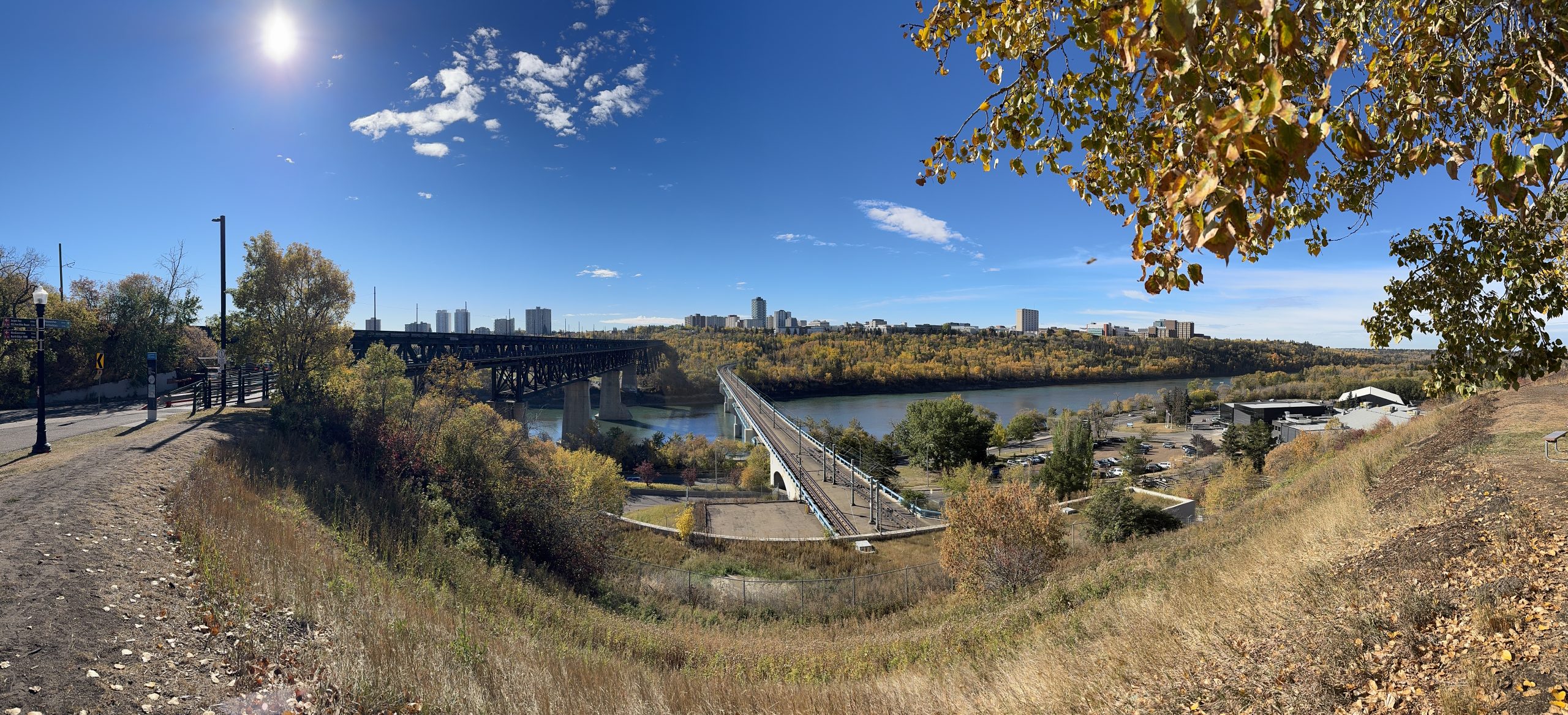The Canadian prairies have a long and storied history that has been felt through the countless ecosystem changes in flora and fauna, and punctuated by the lives and actions of a handful of various peopled cultures that have lived and settled here for some recent thousands of years.
I state it in this particular way to draw attention to the very idea of a nature sanctuary.
A nature sanctuary is a space that has been set aside for the specific purpose of drawing a line around a bit of the map and deciding, as much as it is possible, to pause the progression of history or preserve a piece of it.
We drove to the nearby Clifford E. Lee Nature Sanctuary on this recent sunny Sunday afternoon to wander the trails here and enjoy the day.
The parking lot was full to overflowing.
The sun was hot but the breeze pushing through the trees was still carrying the coolness of late spring.
I turned on my camera.
“Located 33 km southwest of Edmonton’s city centre, the Clifford E. Lee Nature Sanctuary protects 348 acres of marshland, open meadow, aspen parkland and pine forest. The varied habitats of the Sanctuary attract a diversity of animals, including more than one hundred bird species, and provide excellent opportunities for wildlife viewing.“
This particular nature sanctuary was a space that was new to me. I’d never made the trip out here previously.
There is a particular patch of wilderness here. It is crammed between the city-proper to the east, a trans-provincial highway to the north, and the twisting North Saskatchewan river to the south.
The land is a mix of marsh and forest and seemingly poor agricultural space because it is speckled with acreages and nature preserves and the local University’s botanic gardens.
There is a local ultra marathon that runs annually through the “river’s edge” tracing along the bottom of the above map tempting local runners with an eclectic single-track adventure on trails regularly inaccessible except with permission of the land owner.
And when I was much younger, the scoutmaster of my troop knew of a bit of land (or likely knew of someone who owned a bit of land) in this area where we frequently winter-camped as teenagers.
In short, when I think of nearby wilderness, it is this block of a few hundred square kilometers that often jumps into my mind first.
The nature sanctuary itself was only established in the late 1970s, and set aside as a block of land that has been expanded and shifted stewardship over the years.
It was hardly a pristine snapshot of undisturbed local wetland history however. The space has a multi-kilometer elevated boardwalk, picnic areas, bird houses and bird feeders, viewing platforms, plastic toilet boxes, and meandering families straying from the designated paths and being humanly-terrible by littering and trampling.
Yet an imperfect preservation is better than no preservation.
There were countless birds (and baby birds.) The elevated boardwalk was a photographic splendour. The marshland failed to excite my teenager, but I could have stood there for hours and watched the life in and around the murky waters. And spring was in its full groove on Sunday, new foliage popping from the trees, ground and swamp.
This nature sanctuary is a space that seems to have been set aside for the specific purpose of drawing a line around a bit of the map and deciding, as much as it is possible, to pause the progression of history or preserve a piece of it.
Resource extraction sites dot our landscape. Hundreds of houses hide in the woods on small plots of land just out of reach of the city. Roads and highways twist through the countryside. Jumbo jets climb into the sky on their way to explore the world as they take off from the international airport runway a few dozen kilometers away.
It has been preserved for not just Sunday family walks in spring, but to draw our attention to the long history of these spaces, to help us recall the wilderness that was and the future we might want to recapture.
If nothing else, it’s a nice place to escape the city for a few hours.












You must be logged in to post a comment.